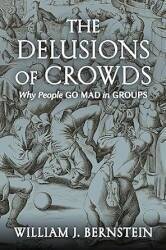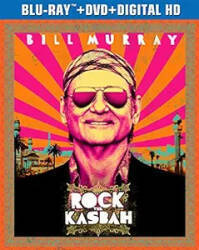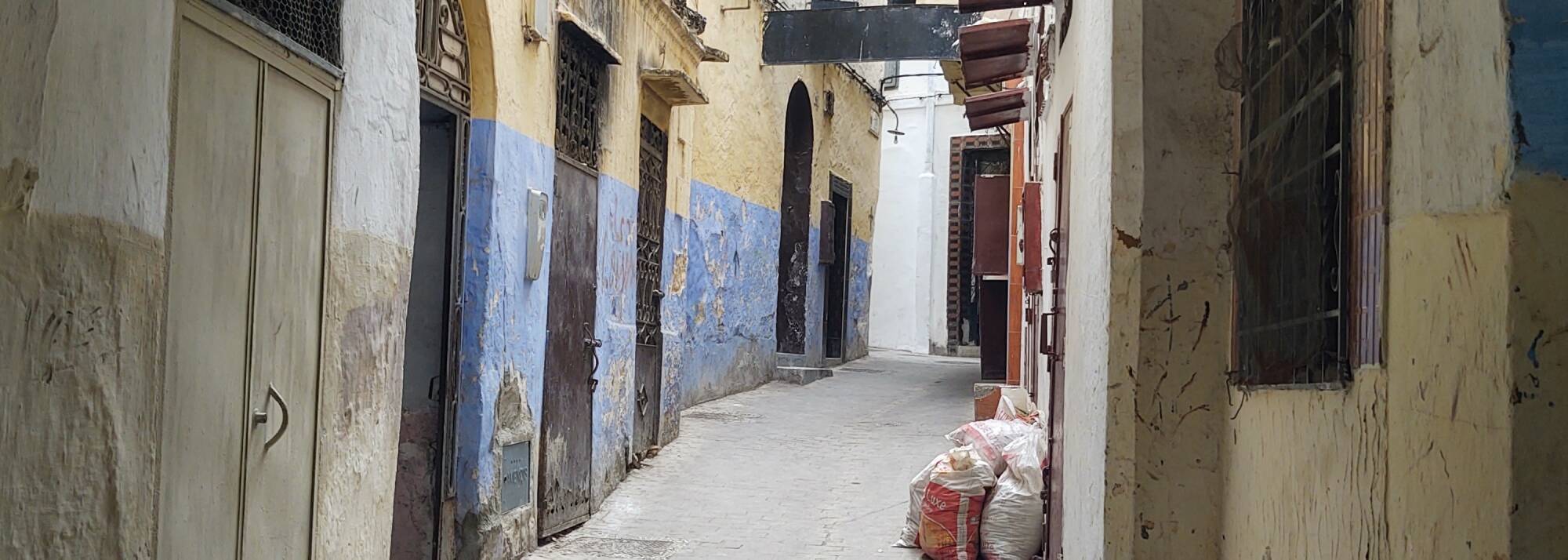
The Tangier Medina
Wandering in the Tangier Medina
Medina is Arabic for "city" or "town",
it's the rather generic name of the second-holiest city of
Islam.
In Arab cities and town today,
medina is used to refer to the old section.
In Morocco, which was under the French Protectorate
from 1912 to 1956, it's contrasted with the
ville nouvelle or "new town" built by the French,
with French-style broad and straight boulevards,
Art Deco architecture in Casablanca,
and contemporary design everywhere.
The medina is physically old, and also traditional.
Other than my first two nights in Casablanca,
I always stayed within the medina on this trip.
Let's explore the Tangier medina.
But first, some mint tea.

I'm in the medina in the pictures above and below, sitting outside at Café Tinjis at the north end of Souq Dakhli or Petit Socco. Tinjis or Tingis was the ancient name for Tangier, dating back to when it was an important Carthaginian port.

Adequately energized with sugar and spearmint, one handful each per glass it seems, I dive into the lanes of the medina. Like that song by Tone-Lōc, but not really.

Yes, it's a public birdcage, a tall cage holding several small singing birds in a square within the medina.

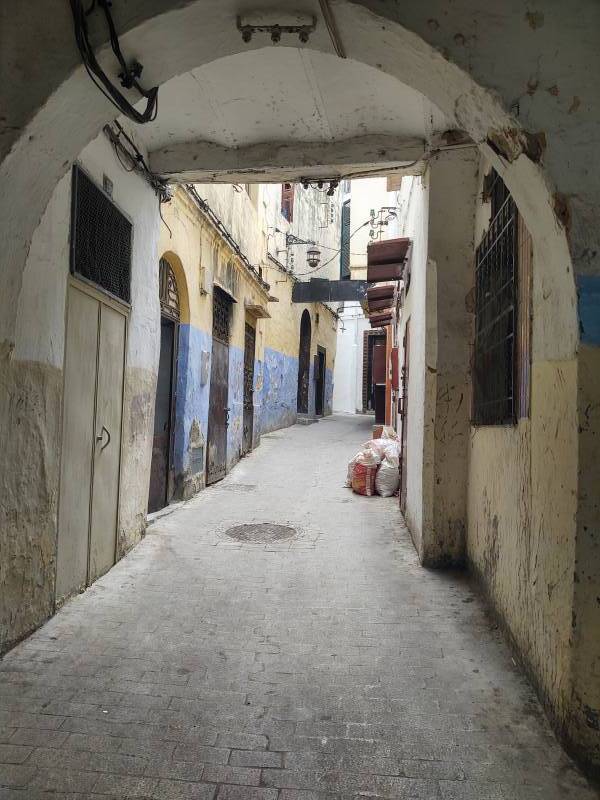
Here is a small tea shop with just enough room for the proprietor, equipment, and supplies.
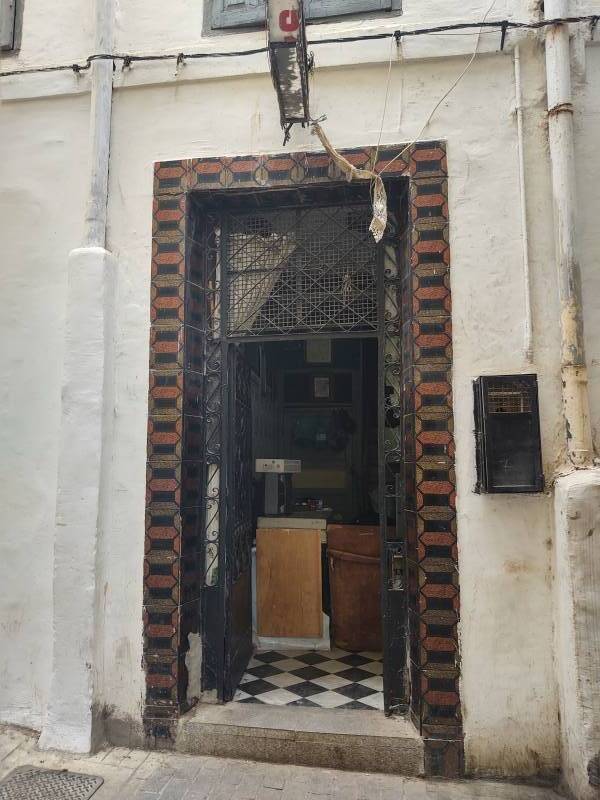

Nearby is a barely larger store.
The street sign at right center in the first picture below indicates the name of a rue or street that has stairs. The only motorized vehicles within most of the medina are limited to moped or small scooters.
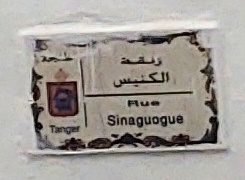
It's misspelled, it should say Rue Synagogue, the same as in English. But don't expect consistent spelling in this part of the world.
The steep street is marked as Rue Sinaguogue. The only other Arab countries I have visited (so far) are Syria and Egypt, both of which seem to be paranoid about Israel and, more generally, people of Jewish descent.
Morocco is quite different, probably because many of its current Arab population are descended from Moors who were driven out of Spain along with the Jews, all of them fleeing the Inquisition.
The Jewish people of Morocco highly esteemed Sultan Muhammed V for protecting them from the Vichy regime ruling over Morocco during the early part of World War II, and thus from Nazi Germany.
The medina of most Moroccan cities contains or is adjacent to the mellah, a similar district in which the Jewish citizens lived.
After Morocco's independence in 1956, the League of Arab States became involved in Moroccan politics, hardening government policies regarding Jewish citizens. A man who claimed to be one of the last 23 Jews in Fez told me that as soon as King Hassan II died in 1999 and it again became possible, almost all the remaining Jews in Morocco immediately emigrated to Israel. Given that Hassan II actually supported emigration including a clandestine program run by Mossad, this episode is another example of how you should be skeptical of tales told in the medina. But Morocco does acknowledge and explain its Jewish past. In 2021, King Mohammed VI started a national program to restore hundreds of historical Jewish sites including synagogues and cemeteries throughout Morocco.
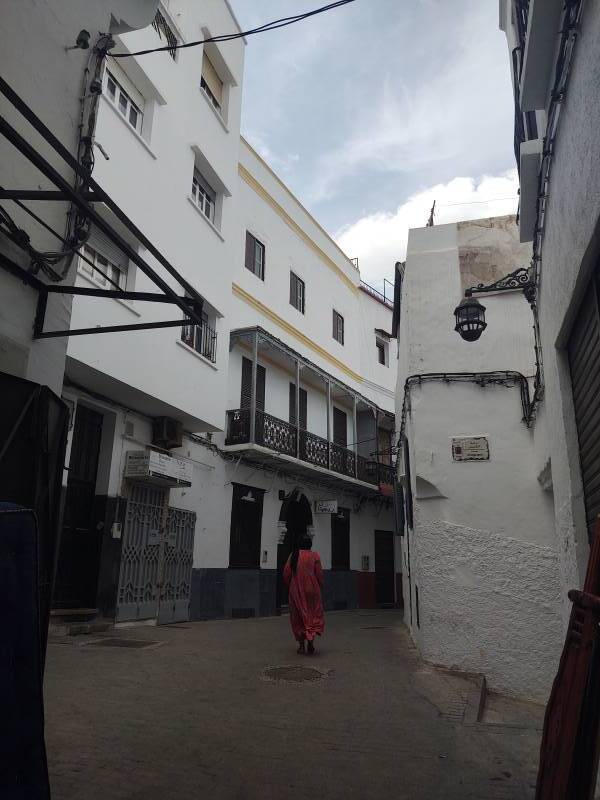
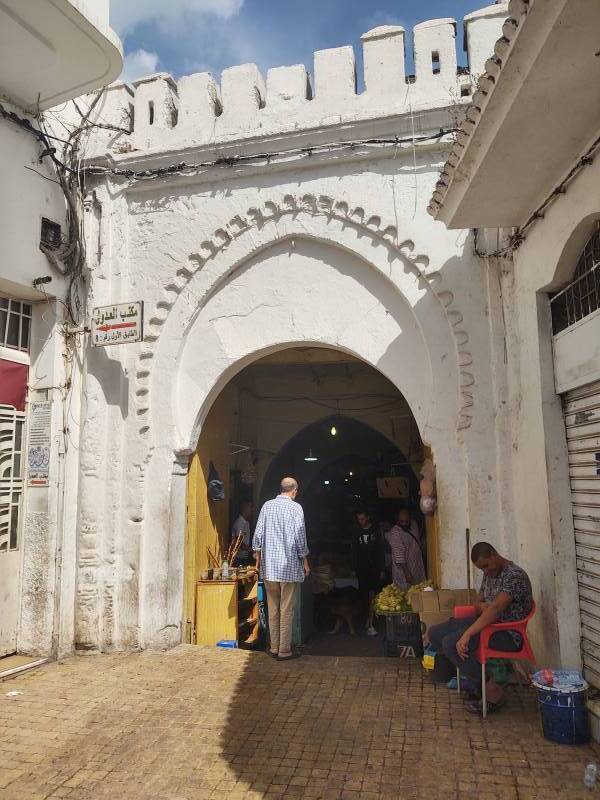
Above, we're looking through a gateway from Grand Socco into a covered market in the southwestern part of the medina.
One thing I noticed was that after people asked where I was from, many of them almost immediately mentioned something about the Jewish heritage in Morocco — there's a nearby synagogue that I might want to visit, or a Jewish cemetery, or the mellah. I suspect that it's because many Moroccans assume that a large percentage of Americans are Jewish, and almost all of those who aren't are keenly interested in Israel.
The reality is that the Jewish and Muslim populations in the U.S. are relatively small, and roughly equal if you only count the religiously observant Jews. A 2017 study estimated 3.45 million Muslims in the U.S., about 1.1% of the total population. A 2020 study estimated 7.6 millions Jews, about 2.4% of the population, but only about half of whom consider themselves to be religious. A 2018 study showed that the U.S. Muslim population was growing rapidly, and would likely surpass the Jewish population around 2040 if the trends remained steady.
As for a U.S. political fixation on Israel, to be honest that's largely the result of several decades of a misguided Evangelical twist on Christian Zionism, hoping to bring about the violent end of the world by fulfilling some purported Biblical prophecy that isn't actually in the Bible. Half of U.S. Evangelicals believe this "dispensationalist End-Times" story, which would bring about either forced conversion or violent death for all the Jewish people, and which doesn't seem very "pro-Israel" on the face of it.
But, hey, it's good for getting right-wing votes, so politicians have been pushing "Rapture" and "End-Times" stories for decades and profoundly affecting U.S. Middle East policy. See The Delusions of Crowds: Why People Go Mad In Groups for details.
Below, we're looking through a gate into the medina from the street leading up the hill to the kasbah.
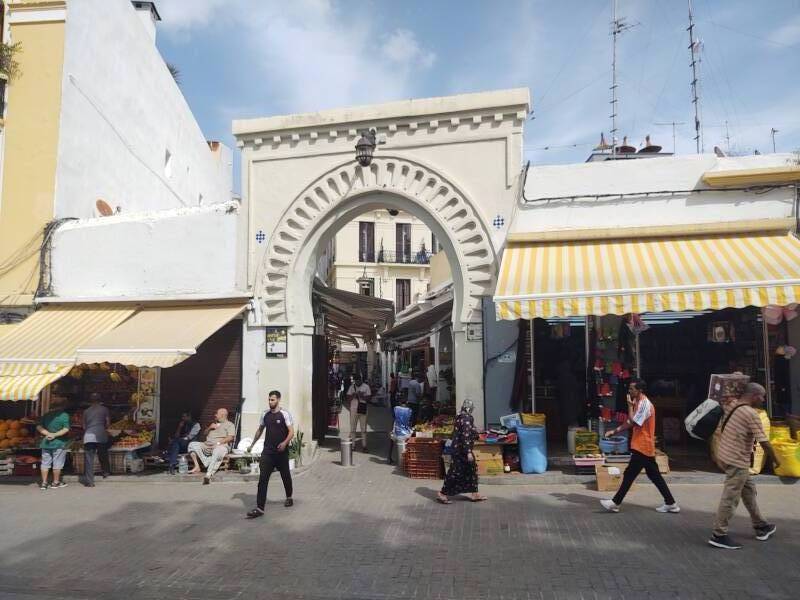
Up at the Kasbah
A kasbah is a fortified structure, referenced by The Clash in that song from 1982's Combat Rock.
Or, much less coherently, in one of Bill Murray's lesser movies, especially as it's set in Afghanistan where the corresponding term is used differently.
Anyway, a kasbah is the core fortified area. A kasbah might be contained within the medina, or it might be adjacent to the medina as is the case in Tangier, or the entire settlement might be within the kasbah's fortified walls, as found in the series of towns in the Draa valley.
Or, as in Algiers, the medina and the kasbah might be the same thing, a particularly well-fortified medina as seen in the 1938 Hedy Lamarr movie directed by John Cromwell. Its main character Pépé le Moko, who was the inspiration for Pépé le Pew. "Come weeth me to ze kasbah."
The Tangier kasbah is next to the highest point of the medina. The area has a fantastic view down over the port and the Strait of Gibraltar. Here is an open courtyard within the joint medina–kasbah walls.
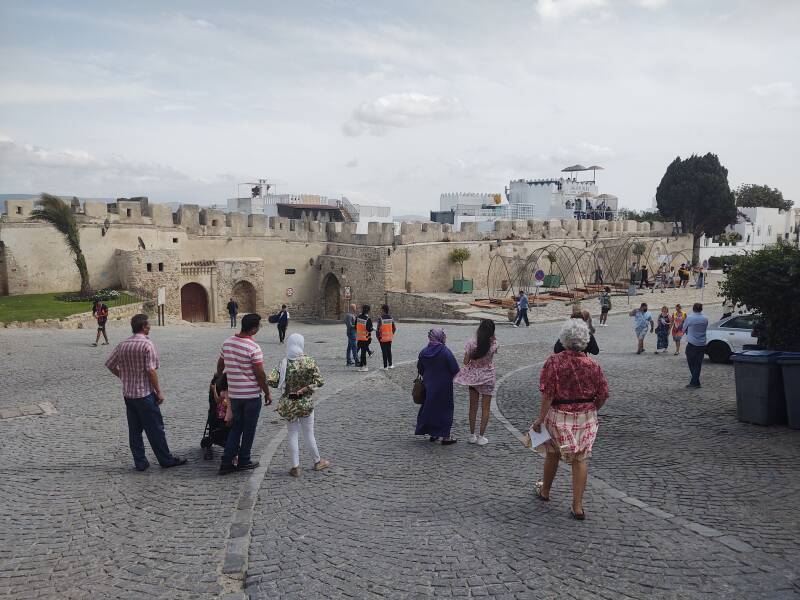
Passing through a recently added gate through the wall, you have a great view. Stepping through it and looking to the right, you see the port of Tangier. A high-speed ferry is approaching from Spain. The greatest number of ferries run to and from Tarifa as that's the closest Spanish port. Fewer run between Tangier and Barcelona, well up the Spanish coast toward France.
The Man inSeat 61
Consult seat61.com for more details on ferries between Spain and Tangier. Notice his explanation that FRS is the only ferry company still sailing to and from Tangier's original ferry terminal within walking distance of the medina. The other ferries use the huge Tangier Med Port about 50 kilometers east along the coast.
The land visible beyond the port and the ferry is the other side of the Tangier harbor, about six kilometers away. Spain is off to the left about thirty kilometers away, invisible in the haze on this day.
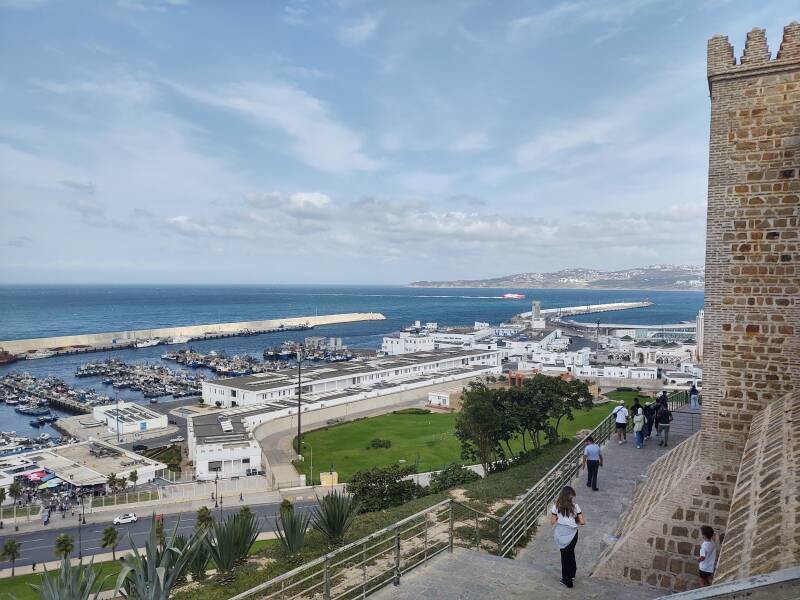
Below, the ferry is pulling approaching the pier.

Toward the left, you are looking out into the Atlantic Ocean beyond the Strait of Gibraltar.
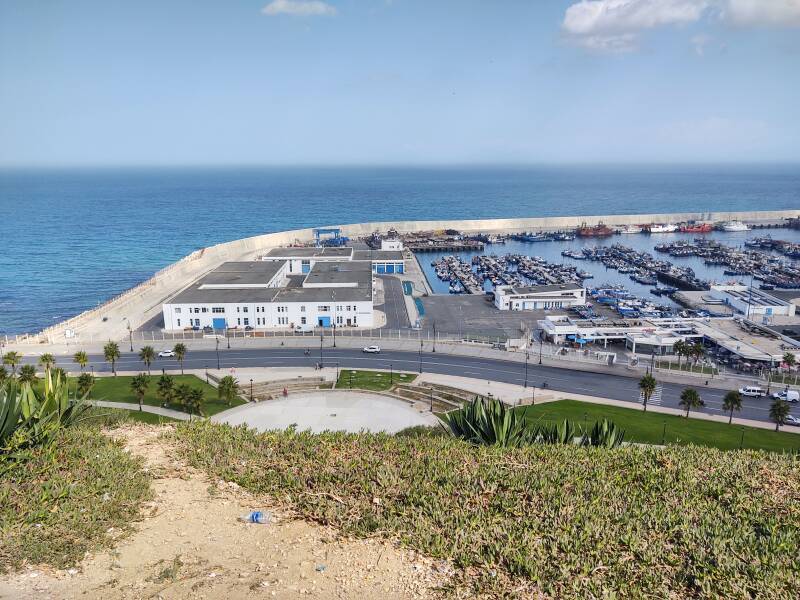
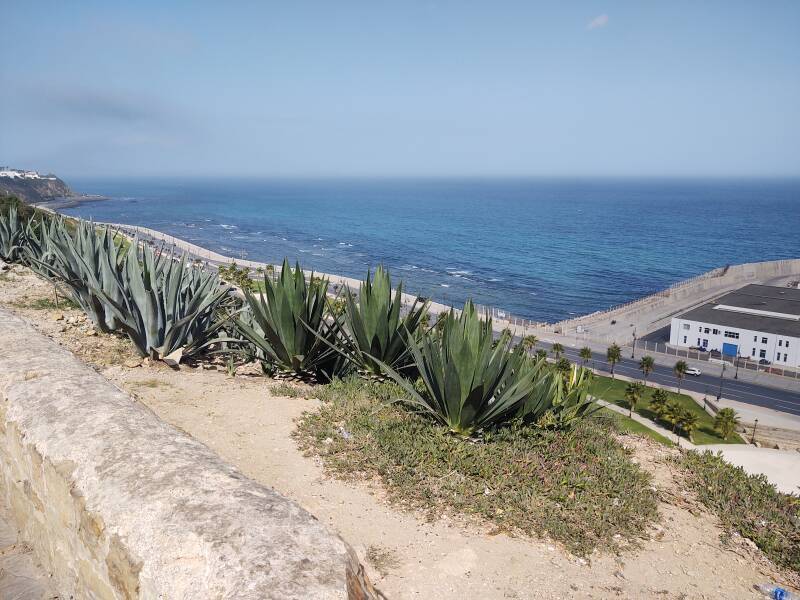
Back into the Medina
There's a wall and a fortified gate between the kasbah and the medina. Of course, because the locals might get unruly and threaten the ruler.
This is a funny gate. Get it? Bab Haha?
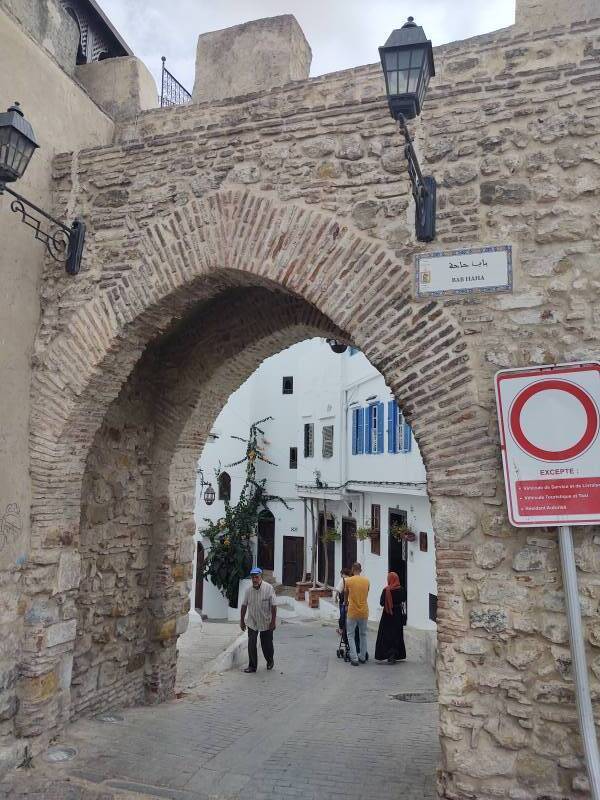

The terrain slopes generally downhill from the kasbah to Petit Socco and the main mosque.
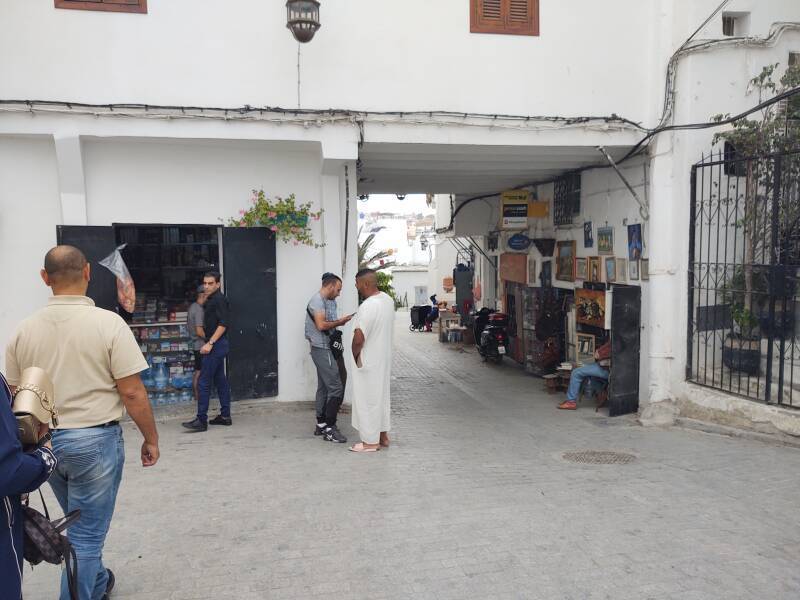
Small passages lead off to the side.

I noticed so many things being renovated across Morocco. I thought that was a very good sign. Here is an elaborate mosque doorway on Place Aissawa.

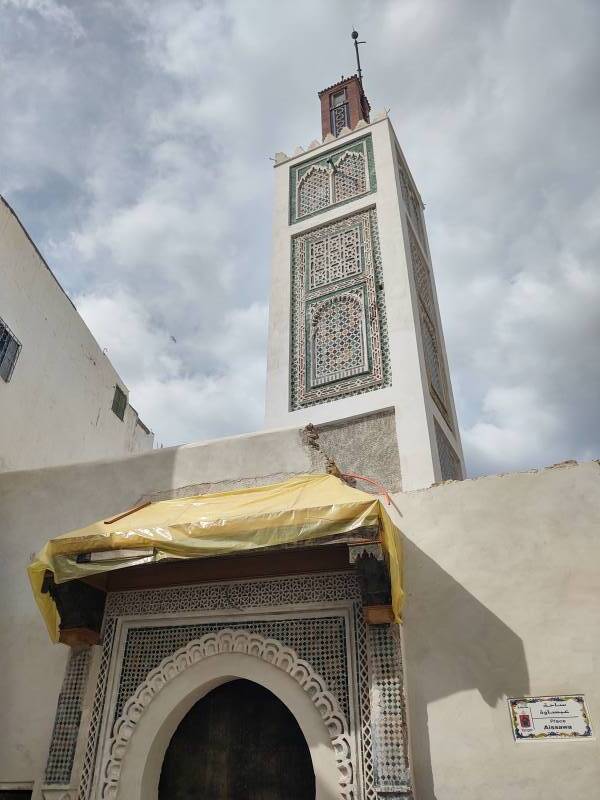

It faces an equally elaborate doorway across the small square.
The Main Mosque in the Tangier Medina
The main mosque in the Tangier medina is just off the east end of Souq Dakhli or Petit Socco. It's a Friday mosque or congregational mosque, meaning it hosts Friday noon prayers led by an imam. It's in a building that was built and used as a church when Portugal controlled Tangier from 1471 to the 16th century, merging with Spain until 1661.
Its minaret has green lighting, green being the color of Islam. Why? There's a ḥadīth, a tradition that Muhammed liked green.

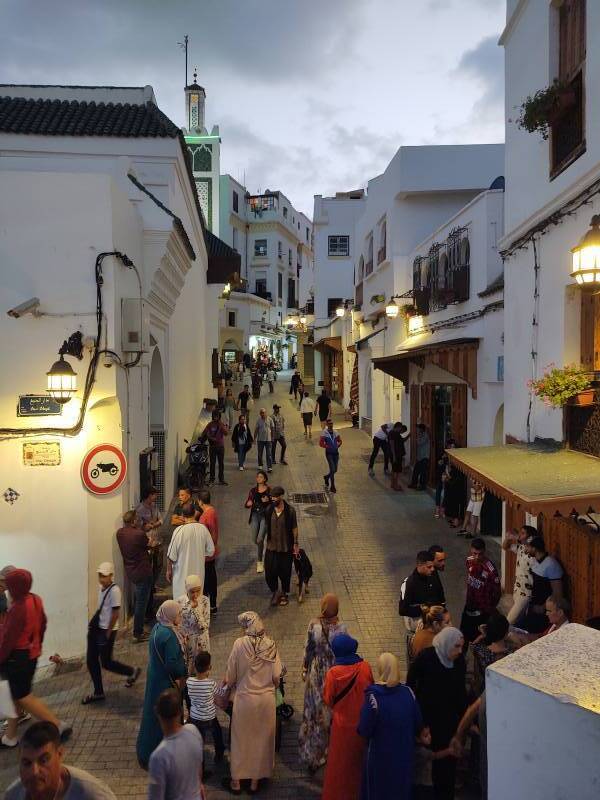
When I was in Egypt in the late 1990s, I noticed that mosques had green fluorescent tubes on their minarets, white tubes slipped into green plastic sleeves. Like all the other lighting in Morocco, this uses LED strip lighting.
Another Day in the Tangier Medina
Another day in Tangier means another day to explore the medina.

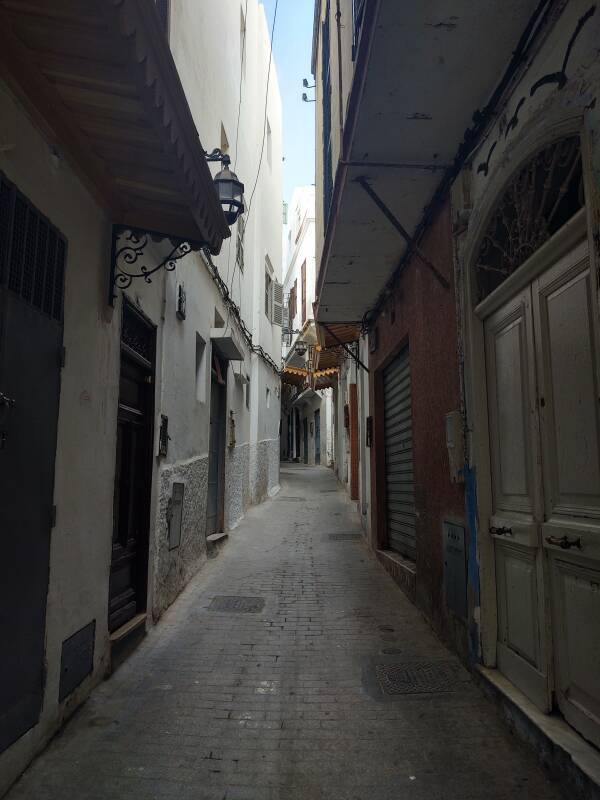
Awnings and balconies almost enclose some passageways.
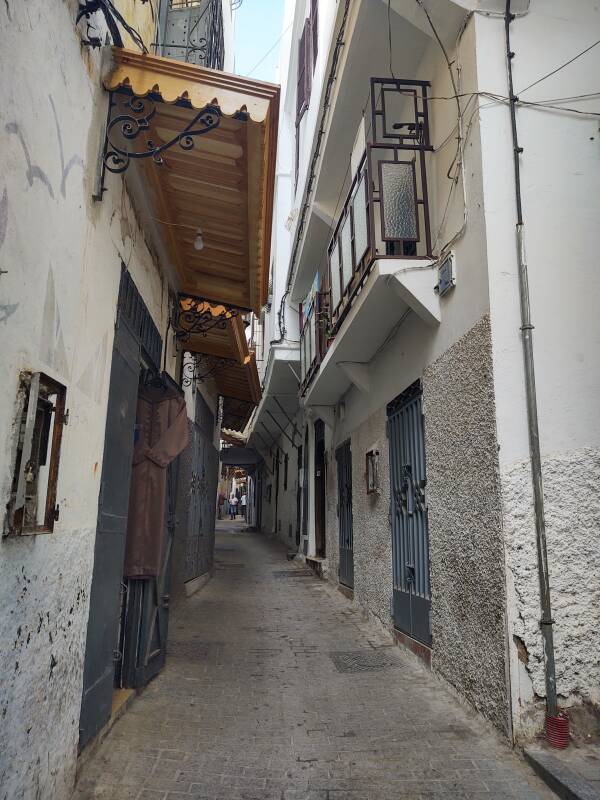
Some buildings bridge across passageways, turning a street into a tunnel.

A derb is a dead-end passage in the medina. Some derbs are short, obviously leading just to one or a few doors.
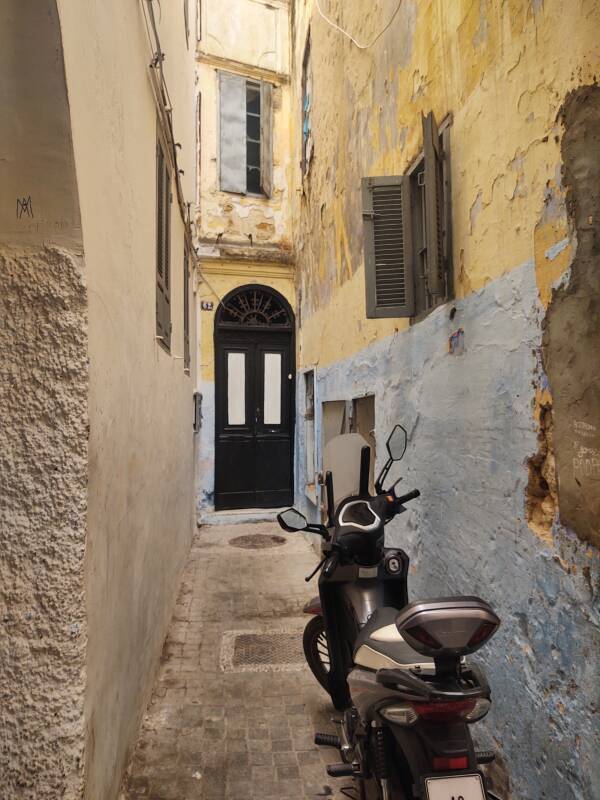

Other passages may or may not be dead end derbs, you won't know until explore them.
The two passageways below connect to others, they aren't dead-end derbs.





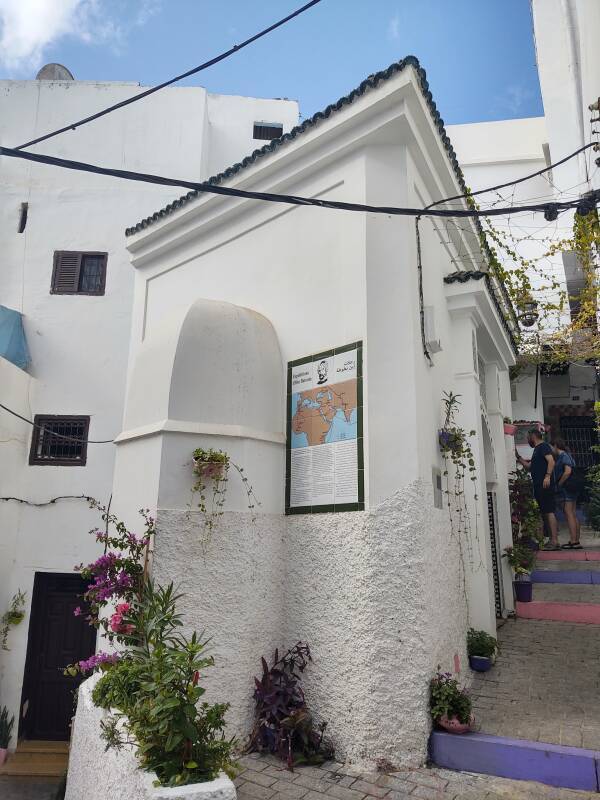
The last picture above shows a small building that purports to contain the tomb of Ibn Battuta, who was born in Tangier in 1304. He traveled more than anyone else in pre-modern history, covering around 117,000 kilometers, almost five times as far as Marco Polo and his roughly 24,000 kilometers.
The passageways have steps when they become steep enough.
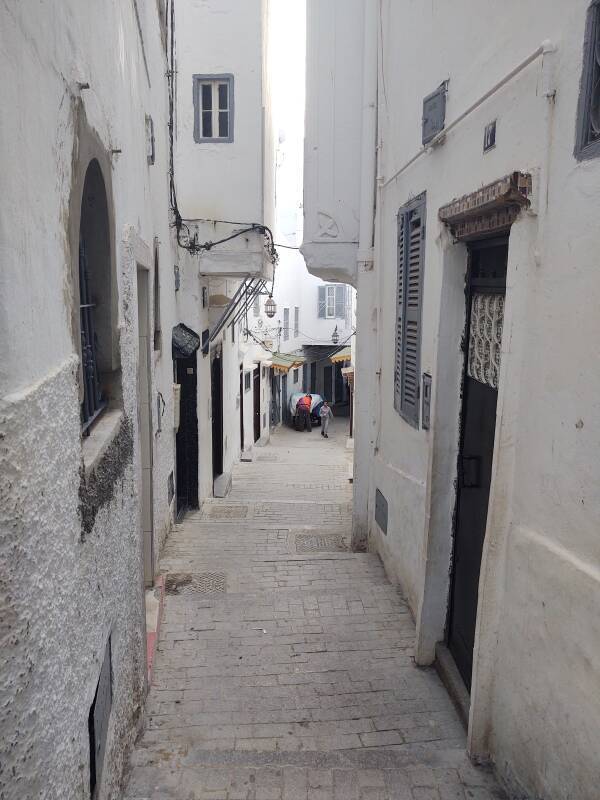
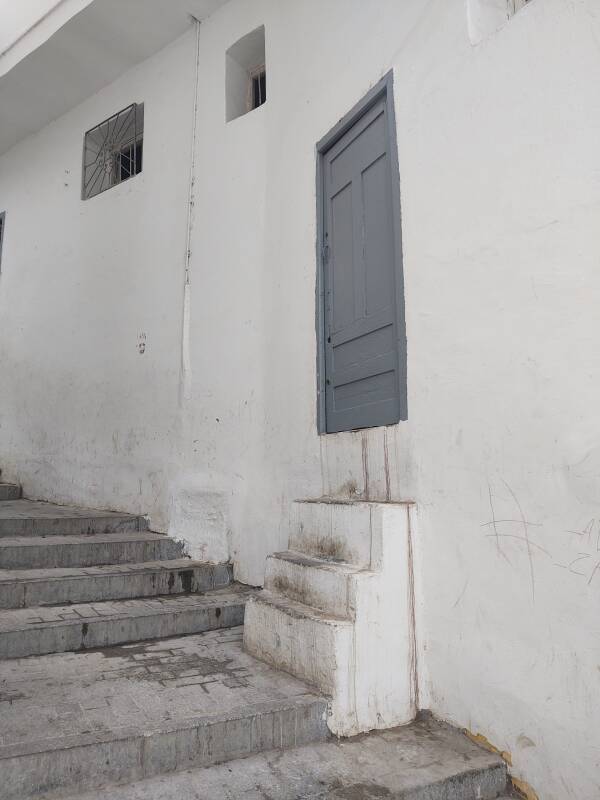
The door shown above is accessed via an unusually steep staircase.
Some of the passages are lined with blue walls, as Al Stewart told us.


The Kasbah Mosque, seen above, is along the south side of the kasbah, near the top of the hill.
This small square is just below the kasbah. The medina is surrounded by walls. Within that, the kasbah is enclosed by a nested set of walls.

The kasbah has multi-layer walls with bent gates through them. That is, if the gate doors are open, you can pass through, but only by making multiple 90° turns.

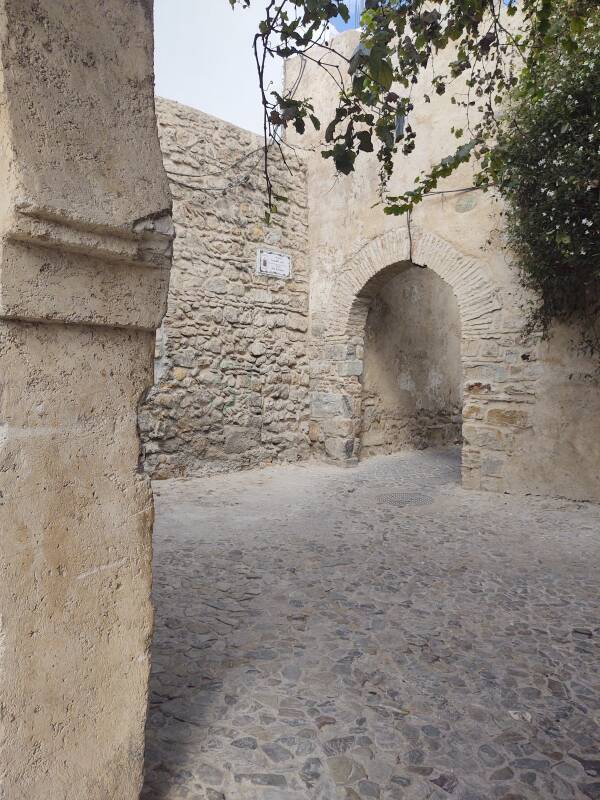
This fountain is between the two layers of kasbah walls.


I eventually reached the large open square within the kasbah.
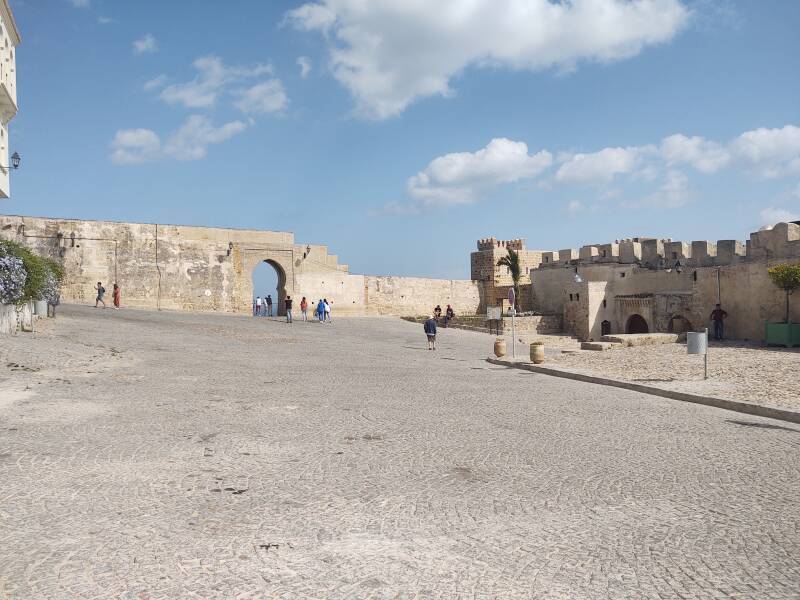
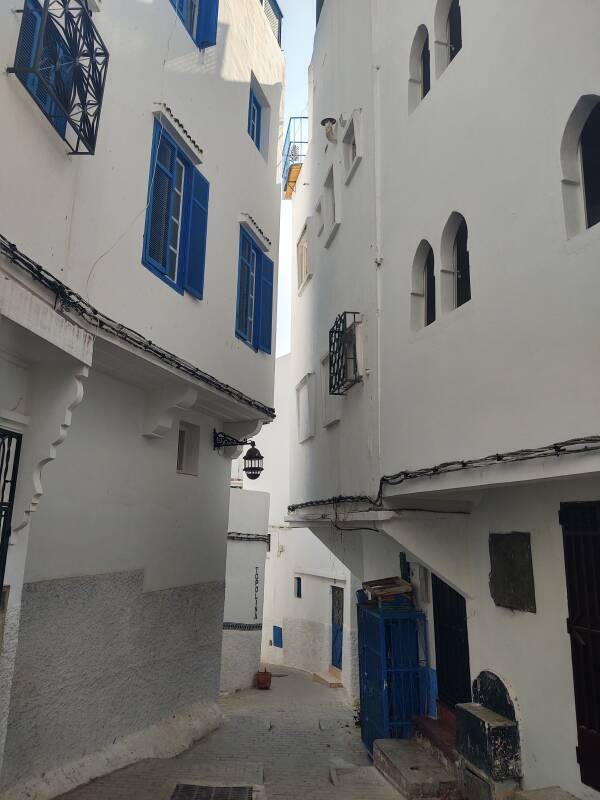

As I once discovered while teaching a technical course in the Washington D.C. area, some American conservatives believe that most people living in France outside Paris and maybe another major city or two don't have electricity. What xenophobic idiots.
In the real world, of course people have electricity throughout Morocco, along with fiber-based Internet and other telecommunications connectivity.
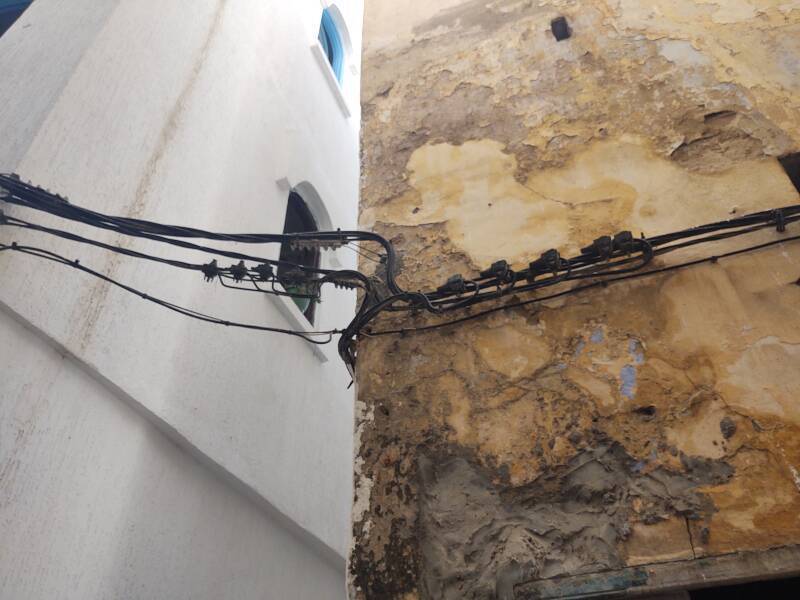
The structures within the medina mostly predate electrical service. So, the wires are on the exteriors of the buildings. Visual inspection becomes much easier.
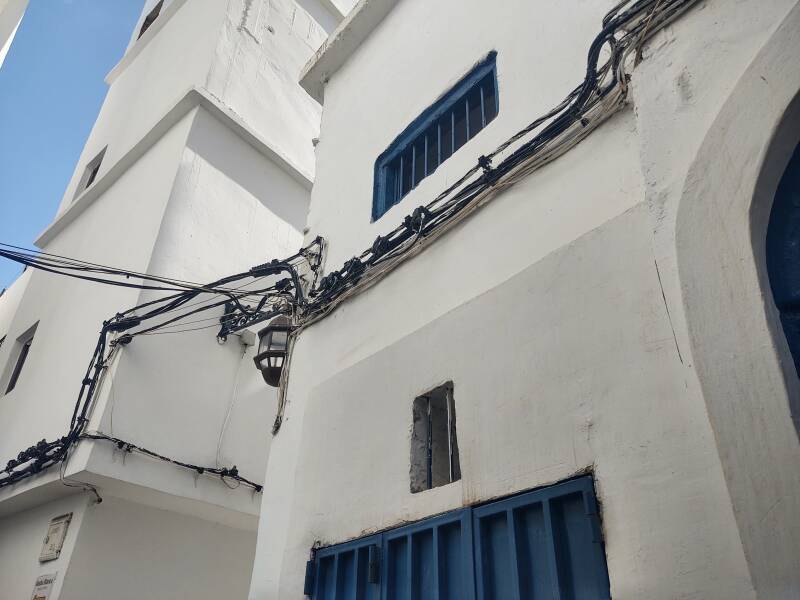
As for water service, every neighborhood has its own fountain. Pipes have been added to connect the buildings, but the neighborhood fountains remain.
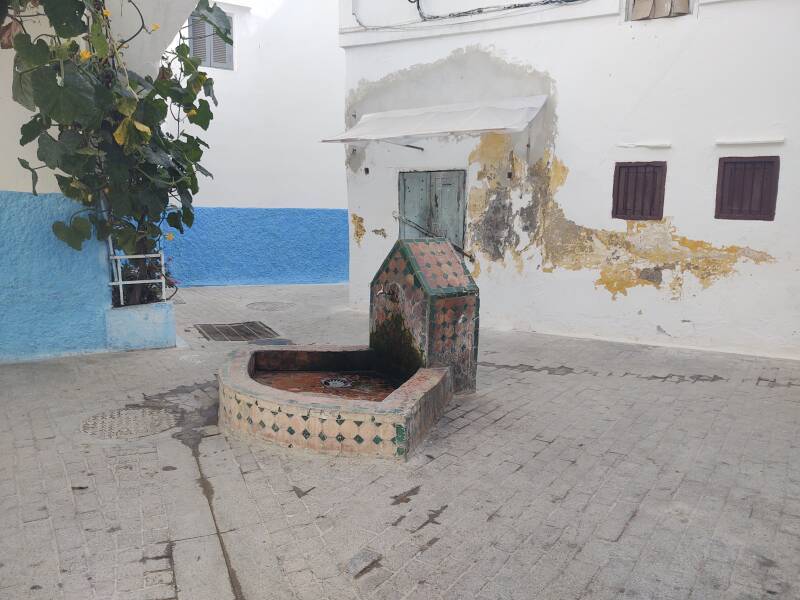



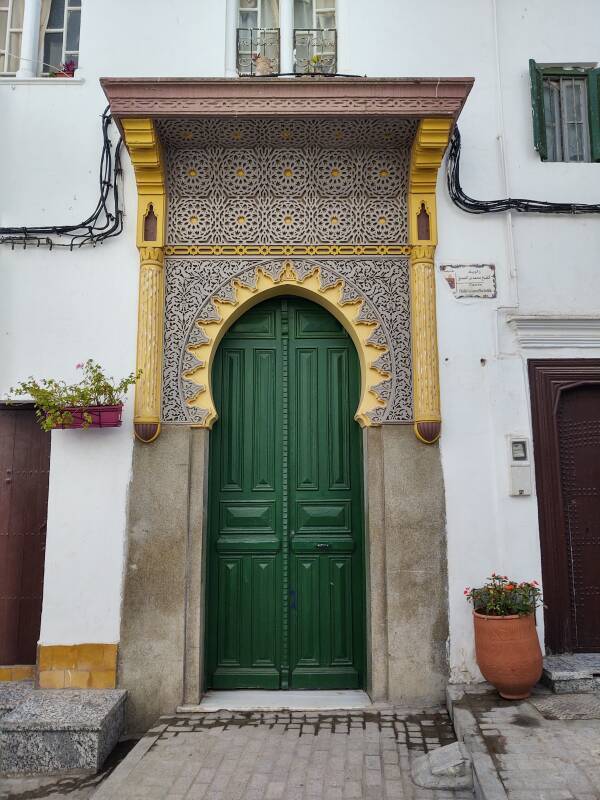
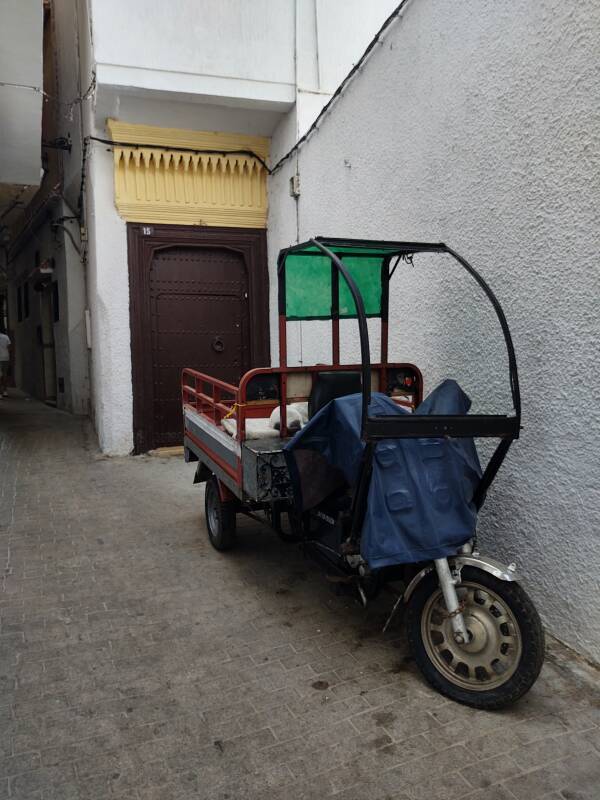
Three-wheeled vehicles like the above can reach some parts of the medina, but not all of it.
Outside the medina, some streets still aren't wide enough for cars, and others are steep enough that they have steps. I needed to buy a towel, and easily found a nice one in this market.

